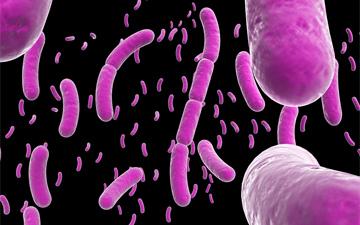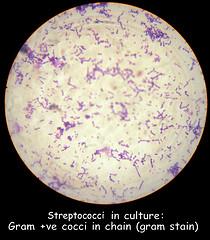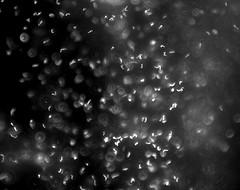Who was the first person known to observe living microbes in suspension?
Antoni van Leeuwenhoek
When looking through a microscope and making observations what should you be playing close attention to?
1. Size relationship: how big are bacteria relative to protozoa?
2. Spatial Relationships: where is the bacterium in relation to the others? Are they all together in chains?
3. Behavior: are individual cells moving? or are they flowing in the liquid medium?
4. Sequence of events: Were cells active when you first observed them?
Who invented the microscope?
Zacharias Janssen
Early microscopes were called?
Simple microscopes
Biconvex lenses essentially a magnify glass
What is used most often to view dark objects in a bright field?
brightfield compound microscope
2 lenses between eye and object and an illumination system
Name the basic frame of a microscope
base, a stage to hold the slide, an arm for carrying the microscope and a body tube for transmitting the magnified image.
The light source is the ___________?
base
Above the light source is the ______________?
condenser- which consists of several lenses that concentrate light on the slide by focusing it into a cone
The condenser has an iris diaphragm which controls the ________ and ____________.
angle
size of the cone light
What does the ability to be able to control the light ensure?
that optimal light will reach the slide
Above the stage, on one end of the body tube is a revolving nosepiece that holds three or four____________________?
objective lenses
At the end of the tube is an ___________ or eyepiece lens (10x12.5)
ocular
What is an monocular microscope?
one ocular lens
A binocular microscope has?
2 ocular lenses
Coarse adjustment knob is used for _____________________?
focusing with the low-power objective (4x and 10x)
The smaller knob is used for focusing with the ___________ and ____________.
high power and oil immersion lenses
Coarse adjustment knob moves the lenses or stage_________________.
longer distances
The area seen through a microscope is called _______________.
Field of vision
The ________ of a microscope depends on the type of objective lenses used with the ocular.
magnification
Compound microscopes have 3 or 4 objective lenses mounted on a nosepiece scanning ______, _________, ___________ and _____________________.
scanning 4x,
low-power 10x
high-dry 40x to 45x
oil immersion 97x to 100x
The total magnification of the object is calculated by _________________
multiplying the the magnification of the ocular (usually 10x) by the magnification of the objective lens.
Which lens is the most important lens in microbiology?
the oil immersion lens
The intensity of light of a compound microscope can be adjusted with a wheel that regulates the amount __________ to the bulb.
current
True or false. Higher magnification requires more light?
true
Resolution or resolving power refers to the ability of lenses to reveal __________or _________________.
fine detail or two points distinctly separated
Numerical Aperture in microscopy is defined by?
NA=n sin O
N= refractive index of medium
O= Angle between the most divergent light ray gathered by the lens and the center of the lens
Resolving power=
Wavelength of light used
_________________________
2x numerical aperture
Small wavelengths of light improve/or lessen resolving power?
improve
What does using immersion oil do?
It minimizes light loss and the lens focuses very close to the slide.
What is the focal point?
where an image is formed
What is spherical aberration? How can you correct this?
Multiple focal points
By using the iris diaphragm which eliminates light and results in a flat optical system.
What is chromatic aberration?
multitude of colors seen in the field
to fix this you can use different colored lenses or use a monochromatic light
When using low powered lens keep the ____________ barely open to achieve good contrast.
Iris diaphragm
Parfocal means?
That when in focus with 1 lens should be in focus with the rest (exception 4x)
More light is needed how can you do this?
with the condenser
What are the magnifications on the microscope?
(Ocular Lens: 10x) + The Objective Lens is 4x (scanning) = 40X 10x (low power) = 100X, 40x to 45x (high dry) = 400X, 97x to 100x (immersion oil lens) = 1000X
What parts make up the microscope?
Ocular Eyepiece, Body tube, Arm, Objective Lenses Stage, Condenser, Coarse adjustment Knob, Fine Adjustment Knob, Base, Iris Diaphrag, Mechanical Stage knobs, Light
What are the four important behaviors in your drawings?
1. Size Relationship
2. Spatial Relationship
3. Behavior
4. Sequence of events
Is the numerical aperture dependent on the maximum angle of the light entering the object lens and on the refractive index?
Yes, the amount of light bending of the refractive index and of the material between the objective lens and the slide.
What is Immersion oil?
makes the light rays pass straight through the slide and you are able to see the specimen clearly, used to keep light from bending.

What shape does the Bacillus Bacteria carry?
rod shaped

What shape does the Coccus bacteria carry?
Any spherical or nearly spherical bacteria or berry-shaped bacterium

What shape does the Spirillum bacteria carry?
any flagellated aerobic bacteria having a spirally twisted rodlike form
Which objectives focuses closest to the slide?
The 97x to 100x with immersion oil.
Assume the diameter of the field of vision in your microscope is 2mm under low power. If one Bacillus cell is 2u.m. how many Bacillus cells could fit end to end across the field? How many 10u.m yeast cells could fit across the field?
2u.m./ 1,000u.m. * 1mm = 0.002---> 1000 Bacillus Cells.-
10u.m./1,000u.m. * 1mm = 0.01 ---> 200 Yeast Cells
Name two ways in which you can enhance the resolving power?
1.) Decrease the distance by moving the stage by the course adjustment. 2.) Dim the light source to enhance
Largest organism observed? And the smallest?
algae- spyro-gyro
bacteria
What were the three bacterial shapes observed?
sphere (coccus)
bacillus (rod)
Spiral (spirillum)
How does increased magnification affect the field of vision?
decreases
Which controls on the microscope affect the amount of light reaching the ocular lens?
Iris diaphragm: less light (higher the contrast)and softer
Name 2 ways in which you can enhance the resolving power:
1. Light shortwave
2.Numerical aperture
What are the advantages of the low-power objective over the oil immersion objective for viewing fungi or algae?
Fungi is large and its easier to see the whole thing this way rather than a portion of it.
What would occur if water were accidentally used in place of immersion oil?
H20 would disperse, less resolution with would make it less dense. "Refractory Index"
Clinical Application: Assume you are looking for microorganisms in a tissue sample from a lung biopsy. The microbes become apparent when you switch to 100x. What microbes is most likely?
bacteria
What are the 4 objectives of lenses?
Scanning- red band 4x
Low Power- yellow band- 10x
High Dry- blue band- 40x
Oil immersion-white band- 100x
Higher magnification- field of vision ____________?
decreases
What is agar?
it is extracted from algae for petri dishes- solidifying agent
Why agar and not gelatin?
most bacteria can't metabolize it and use it for food
Remains solid @incubation
Gelatin liquefies at 35-37 degrees Celsius
In which states is agar used?
liquid-broth 0% agar
semi-solid 0.4-0.7% agar
solid-1.5% agar
True or false. Growth patterns are only in broth.
true
Bacterial growth patterns in liquid are?
1. turbidity-cloudy
2. pellicle- ring of bacterial growth at top of surface
3.flocculent- fluffy or wooly appearance
4. Sediment- bottom pieces